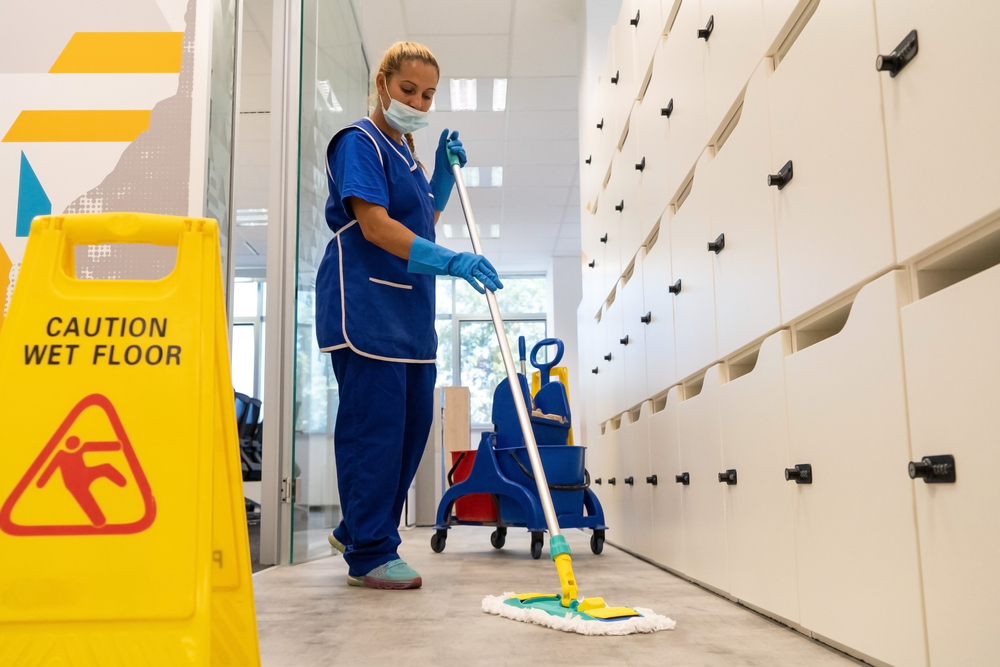What are my health and safety responsibilities when hiring contractors?
Many business owners are unclear about their Work Health and Safety (WHS) responsibilities when it comes to hiring contractors to perform work in their workplace. There is a common misconception that outsourcing work to a contractor absolves business owners of their WHS responsibilities. This misconception stems from the fact that many contractors work independently from the business that engages them, and may even be hired on a one off occasion.

Many business owners may not understand their WHS responsibilities towards contractors they engage
Under WHS legislation, as an employer and/or a person conducting business or undertaking (PCBU), you have the main responsibility for the health and safety of everyone on your work site, including contractors and visitors.
Your duties are qualified by the term ‘reasonably practicable’. There are two elements to what is ‘reasonably practicable’. A duty-holder must first consider what can be done – that is, what is possible in the circumstances for ensuring health and safety. They must then consider whether it is reasonable, in the circumstances, to do all that is possible. This means that what can be done should be done unless it is reasonable in the circumstances for the duty-holder to do something less.

Employers have a duty to ensure that contractors perform their work safety
When hiring contractors you are entitled to rely on the expertise of others. However WHS legislation states you cannot contract out your WHS duties to another party, even when you have a minor role in the work to be performed. If you attempt to transfer your WHS duty to another person via a contract, that provision in the contract will be invalid.
How to ensure contractors can perform the work safely
Even if your participation in the work to be performed is minor, or if you may not have the knowledge or skills to undertake the work, as the employer in control of the work site you are likely to have some role or ability to influence or direct a particular aspect of work that others may not. One way of meeting your WHS duties is by choosing the right contractor that can perform the work safely.

Employers need to assess the capability of the contractor to perform the work safely
Among other things employers need to verify that the contractor:
- Has the relevant knowledge, qualifications and licenses to carry out the work safely
- Has their own safety management system, which is acceptable according to your standards, to carry out the work safely
- Is carrying out the work safely in accordance with their own safety management system
- Has inspected and maintained their equipment, plant and tools appropriately.
Consulting previous employers that the contractor has worked with in the past is a good way to check previous safety performance.
Employers duty to consult with contractors on WHS matters
WHS laws requires PCBUs to consult with contractors they engage to discuss how WHS duties will be managed on the work to be performed.

This consultation should include:
- Identifying all WHS hazards and risks on the site which the contractor is likely to encounter, as well as those specific to the work to be performed
- Ensuring the contractor understands how identified WHS risks will be managed and controlled
- When multiple parties are involved (such as multiple contractors or subcontractors), cooperating and working together to make sure the controls put in place complement each other and effectively manage all WHS risks.
Throughout the job, PCBUs should continue to consult and monitor all contractors to:
- Ensure control measures are implemented and remain effective
- Identify any changes to the work environment or to the way work is being performed
- Identify any new hazards that may arise.

Throughout the job employers should continue to monitor and consult with their contractors to ensure work is performed safely
It is good practice to record any consultation or discussions you have with your contractors; the agreements you reach on how work will be carried out and how risks will be managed. Some examples of consultation records include health and safety meeting agendas and email communication records.

Keep a record of all consultations with your contractors
The importance of contractor and visitor induction
Engaging contractors who are not familiar with your workplace and its hazards can be a significant risk and can lead to accidents. Furthermore, contractors have a reduced knowledge of your safety management system, and are not supervised in the same manner as one of your employees. It is therefore crucial that your contractors (and all visitors) are inducted into your site and appropriately trained into your safety management system.

Inducting all contractors and visitors into your site is critical for safety
Managing contractors easily using a WHS Management System
Employers can easily manage the various complicated aspects of contractor safety by having a WHS Management System (WHSMS) in place. A WHSMS provides employers with a guided systematic approach to handle WHS responsibilities for both employee and contractor management.

Having a WHS Management System in place allows employers to easily manage their health and safety duties
A good WHS Management System should consist of:
- WHS Manual – the overarching framework for the system describing the processes by which each safety issue will be managed
- Induction – A document to allow employees, contractors and visitors to learn relevant health and safety information as well as hazards and risks specific to your workplace
- Policies – High level guiding commitments and principles that your organisation operates by
- Procedures or Safe Work Instructions – Specific instructions relating to particular tasks, equipment or substances
- Registers – Such as training registers to monitor and ensure all workers have been inducted and appropriately trained
- Forms – Such as workplace inspection forms and hazard identification checklist
- Consultation and meetings module – To record and capture all consultation about health and safety matters
- Incident recording and investigations – Including guidelines and planning for incident response, ensuring incidents (including near misses) are captured, as well as procedures to ensure incidents are fully investigated and corrective actions taken as required.
A joint WHS responsibility

Under WHS legislation, both your business and the contractor can be held responsible should any incident occur. Therefore it is crucial that you understand your WHS duties and responsibilities, and have the right management system in place to ensure your obligations are met systematically. All parties have a shared WHS responsibility and must work together to ensure the health and safety of themselves and others in the workplace.
After all, every worker should be able to go to work at the beginning of the day secure in the knowledge that they will return at the end of the day to their family unharmed.
References
Safe Work Australia, 2018, ‘Code of Practice – Work health and safety consultation, cooperation and coordination’, https://www.safeworkaustralia.gov.au/system/files/documents/1901/ code_of_practice_-_consultation_cooperation_coordination.pdf, accessed 25th May 2023.



